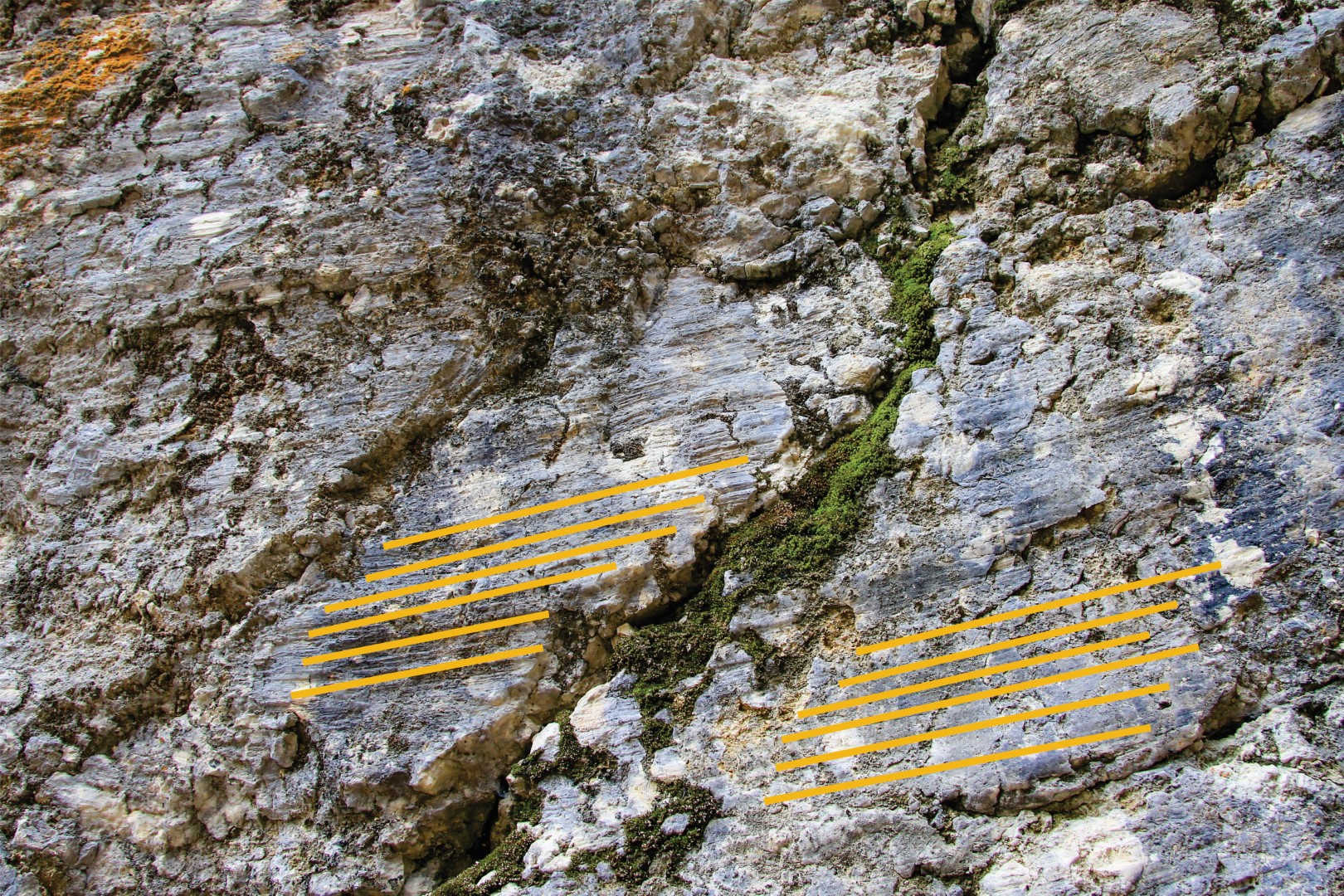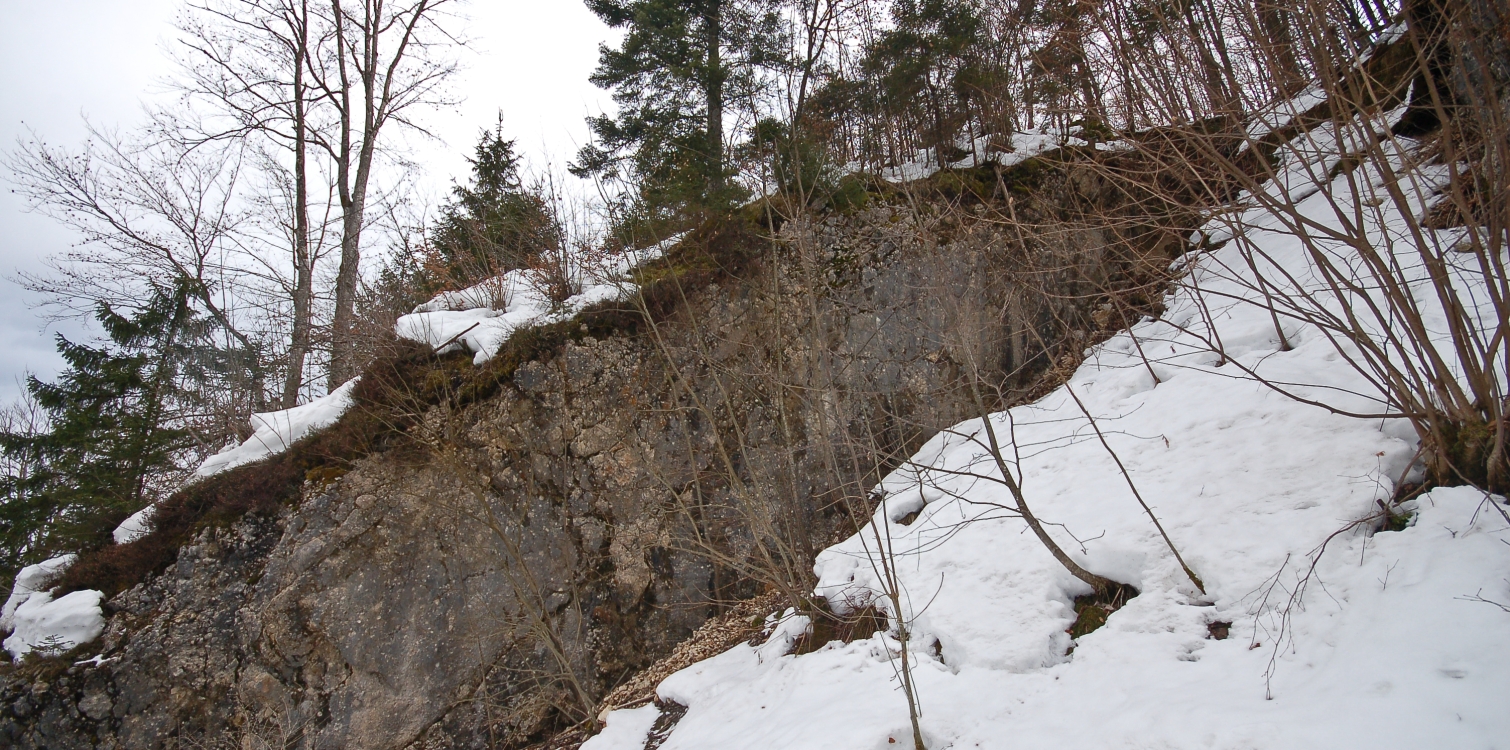| Name of the natural value: | Na skalci - nahajališče jezerske krede, ledeniškega obrusa in fosilne morske obale |
| Type: | Geološka naravna vrednota državnega pomena |
| Id: | 4412 |
Short description:
Along the southern shore of Lake Bohinj, west of Ribčev Láz, a Triassic limestone with a glacial outcrop is exposed along the footpath, with typical and clearly visible scarps as a result of the abrasion of the rock masses and clasts carried by the Bohinj Glacier. The wall, about 6 m long, is in an inverted position with respect to the fossil depressions drilled by lithophages (stone-turned shells) and represents a rare example of a fossil shallow marine shoreline. Alongside the limestone there is a small outcrop of typical lacustrine chalk and limestone with Palaeocratic fills, traces of former uplift.
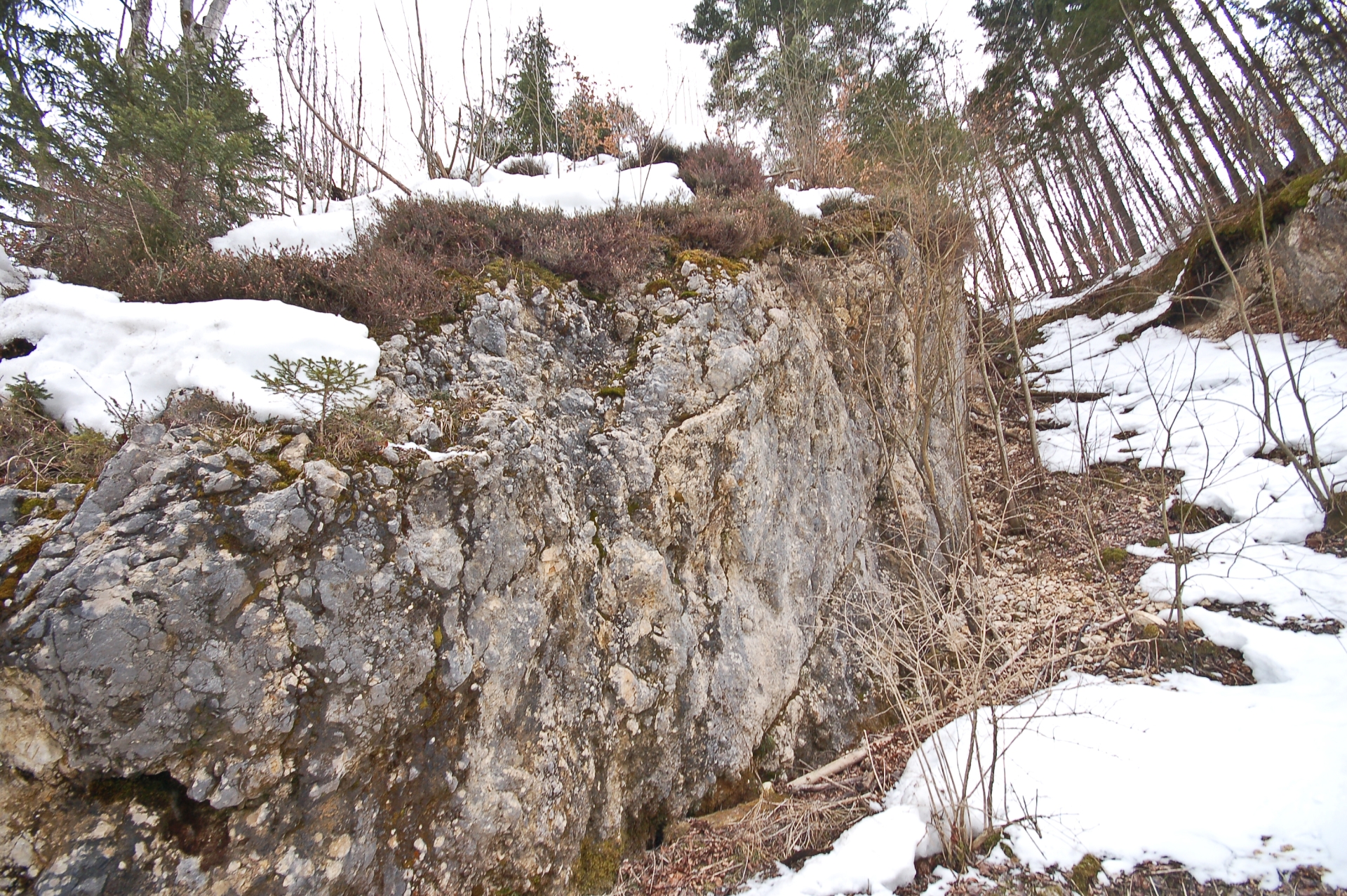
Seashore in Bohinj?
Evidence of the former sea shore is clearly visible in the vertical limestone cliff just off the southern shore of the lake. The wall, which is several metres high, preserves holes up to 10 cm deep that were drilled into the older rock, which is more than 200 million years old, by marine rock-dwelling bivalve molluscs (Lithophaga) around 20 million years ago. They were similar to the marine date fish (fingerlings) that live today. With the help of the acid secreted by their salivary glands, the molluscs dissolved the limestone and thus built their homes, which are still visible today.
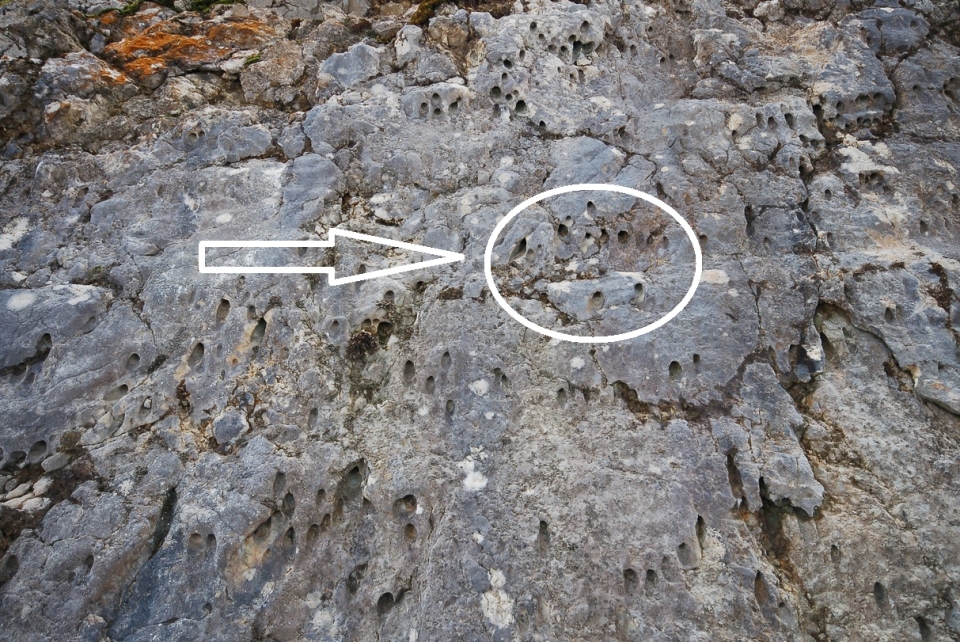
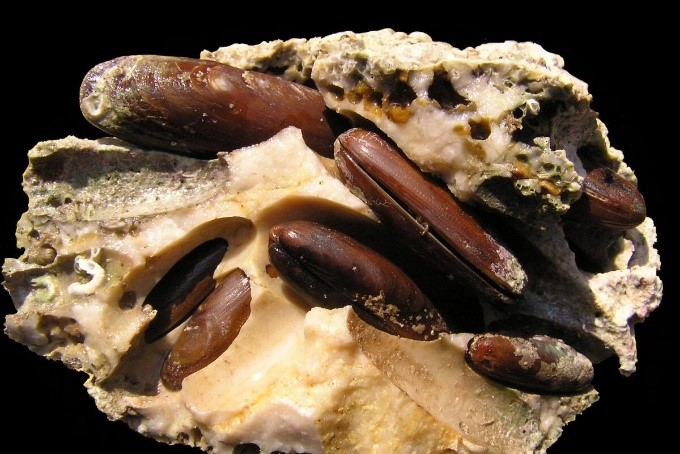
Limestone with traces of quarrying
Date Shells
Remains of glacial activity
Lakes Chalk
The glaciers disappeared from the Bohinj area more than 10,000 years ago, leaving behind a varied and interesting record of their activity alongside the lake.
A special rock, the Lake Chalk, is preserved along the limestone wall. This fragile and soft chalk was formed from almost white, fine-grained carbonate material deposited at the bottom of a glacial lake. The finest material is the result of glacial erosion and was deposited in the lake by the surrounding rivers. It has slowly hardened into rock - lake chalk. Changing seasonal conditions and climatic cycles have given the layers different colours and shades. The light grey colour is due to organic residues and the yellowish grey to iron oxides.
Ali veš?
- that at the time of disposal, the lake was almost 60 m higher than it is today.
- that the ground chalk from Bohinj was used in the chemical industry.
- that the former excavation sites are still visible to the south-east of the 'Sv. Duh' Church.
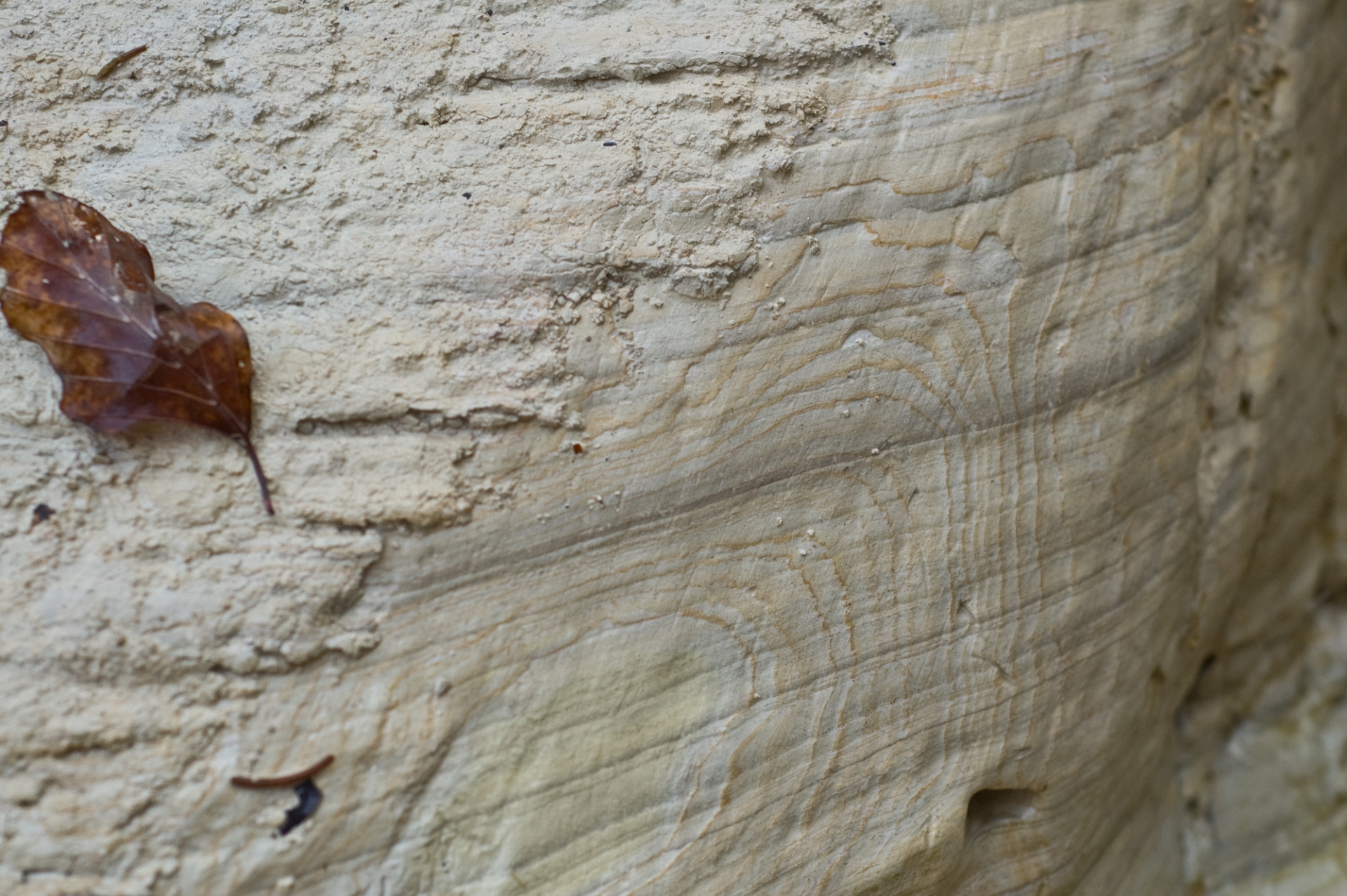
Traces of glacier sliding
The glacial activity is also clearly visible on the limestone rock, where traces of active life have been left by the stone quarries. The traces of the glacier that once slid slowly over the bedrock, rubbing and grinding it with its weight, are called outwash or skid marks. This is clearly visible in distinct lines as gouges and grooves on the bedrock just at the contact with the lacustrine chalk.
